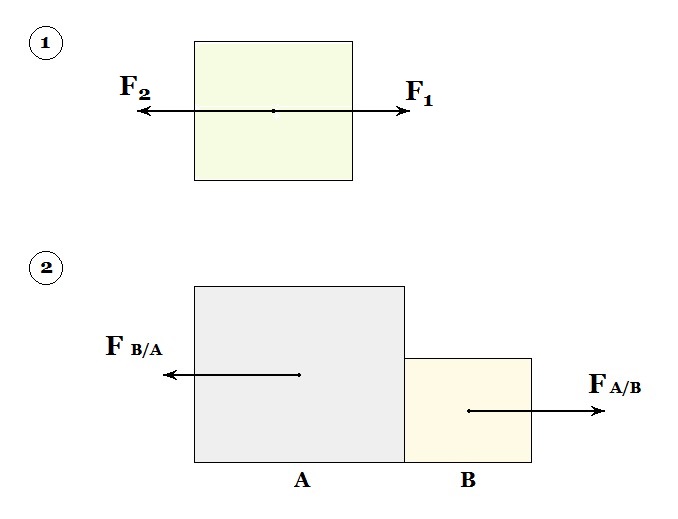Question #d4070
1 Answer
The answer is very simple: the difference is in the object on which the forces act. An action-reaction pair is not canceled. On the other hand, balanced forces do.
Explanation:
Consider the following image:

Consider case 1:
On a body two forces of the same modulus and direction act but opposite directions,
Instead, let's see what happens in case 2:
Here, we have a body
That is, to the
But these forces, being of equal modulus and opposite senses, do not cancel out. Why? Because they act on different bodies . The resulting force on
Where we have assumed that the left-right direction is the positive.

